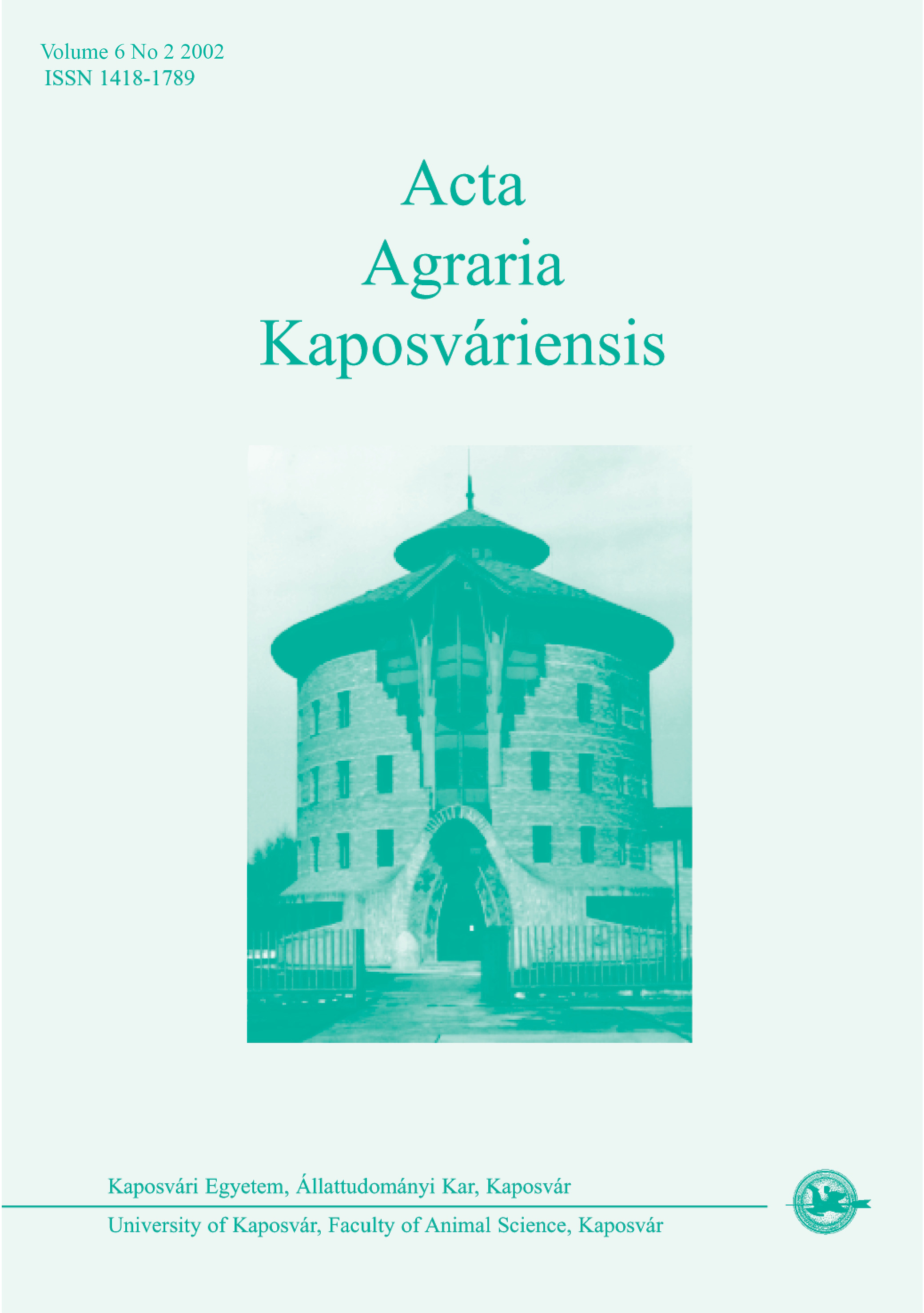Alterations in the fatty acid composition of rabbit longissimus dorsi muscle after electrical stimulation
Kulcsszavak:
fatty acid composition, rabbit, longissimus dorsi muscle, electrical simulationAbsztrakt
The experiment was performed to investigate whether transcutaneous electrical nerve stimulation (TENS) of the longissimus dorsi muscle (MLD) of rabbits induces specific changes in the muscle fatty acid profile. Ten four-week old Pannon White rabbits were treated with TENS two times a day, with the settings: 30 Hz, 20 µs impulse length,
10 mA, 2 x 20 minutes. After a treatment of 50 days rabbits were experimentally slaughtered and the fatty acid composition of the MLD was measured by gas chromatography. TENS treatment increased the proportions of linoleic (C18:2 n-6), linolenic (C18:3 n-3) and gondoic acids (C20:1 n-9), compared to the control group. However, the level of palmitic (C16:0), stearic (C18:0), oleic (C18:1 n-9) and eicosapentaenoic (C20:5 n-3) acids significantly decreased. The proportion of total unsaturated fatty acids significantly increased. On the basis of the obtained results TENS may have similar effects in a specific regard on the muscle fatty acid profile like physical load. Based on the suggesion that the composition of the membranes was also affected, the electrical stimulation of muscles may have further consequences, e.g. on the membrane properties and meat quality.
Letöltések
Megjelent
Folyóirat szám
Rovat
License
Copyright (c) 2002 Szabó András, Husvéth Ferenc, Szendrő Zsolt, Romvári Róbert

This work is licensed under a Creative Commons Attribution-NonCommercial-NoDerivatives 4.0 International License.






